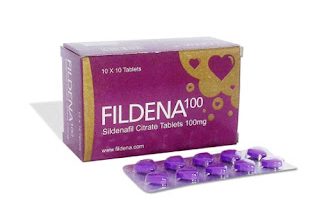What Is Circumcision?

A circumcision is a surgical procedure in which the foreskin of a human penis is removed. The procedure is most often performed using forceps to stretch the foreskin. To hold the penis in place, a device can be inserted into it.
Pain and swelling
Many men experience pain and swelling in the first few days following circumcision in melbourne. This is normal, and will diminish as the incision heals. However, it may be hard to concentrate on work and other activities for a few days.
There are many methods to reduce the pain and swelling that follows circumcision. Petroleum jelly can be applied to your penis’s head and incision line. This will prevent your penis from sticking on clothing and diapers. It will also keep your penis clean and dry.
You can also apply ice to the area. Ice packs should be wrapped in a tea towel so they don’t come in direct contact with the skin. Avoid rubbing the wound. This can cause irritation and bleeding.
To relieve your discomfort, you can also take painkillers. You should not exceed the recommended dose, though.
You should also avoid having sex during the first 4 weeks after circumcision. This will reduce the chance of infection. You can also request a week of leave from work.
Children should avoid rubbing the circumcision site. They can also wear loose diapers to keep the area clean and free of infection. You can apply a nonsteroidal, anti-inflammatory drug to any discomfort you experience in the first few day.
You should avoid using an antiseptic. Antiseptics can slow down healing and increase the risk for infection. You should also avoid using a tight circular bandage. This can block urine flow, leading to urinary retention.
You can ask your doctor to prescribe pain medication if you are concerned about the pain or swelling following circumcision. Your doctor can also advise you on how to care for the incision and prevent infection.
You might consider taking two weeks off work if you have a very heavy workload. This will give you time to heal and allow you to move around freely.
Circumcision can be a fairly simple procedure, but it is a good idea to consult a doctor before undergoing the procedure. You will need tell your doctor about any allergies or previous medical conditions.
Infection
Surgical infections following circumcision are rare, and often self-limiting. They can spread quickly if they aren’t treated immediately. Infections after circumcision are usually caused by a disruption in the skin barrier. They can be both localized and systemic.
Local infections can occur after ritual circumcision. Vesicles may develop in the infant’s genital area eight to ten day after ritual Circumcision PlasticRing. These lesions may be red, swollen or pus-filled. Other symptoms include fever, enlarged lymphnodes, and increased pain at circumcision sites. These symptoms can become severe if they aren’t treated.
Systemic infections can be more severe and can cause fever, lethargy and poor feeding. Respiratory distress can be common in neonatal cases. The patient may need to be given antibiotics and parenteral fluids. These cases are usually caused by Staphylococci.
Open wounds are the most common site of infection after circumcision. These infections can lead directly to an ascending urinary tract infection. Cellulitis is a second possibility.
An open wound after circumcision can also cause severe necrotizing fasciitis. In this case, the infection may be caused by Staphlococcus aureus. The patient was admitted to the hospital and was given systemic antibiotics. The patient responded well.
One study showed that circumcision does not reduce the risk for bacterial vaginosis or urethral Chlamydia infections. However, another reported a significantly reduced risk of HSV infection after circumcision. The researchers attributed this discrepancy to the different age groups and baseline HSV prevalence. The data are however still controversial.
The USA has observed that circumcision may reduce the chance of HPV infection. These studies, however, are limited in number due to the small sample size. Men who are circumcised after the wound heals may be at greater risk of HIV.
Reports of sepsis or meningitis have been reported after circumcision in 1970. These infections were caused when a surgical wound was not properly cleaned and treated. During recovery, pneumonia was a major complication.
There have been reports of two small infants who had life threatening infections after elective circumcision. These two infants were born to mothers who had never been infected with herpes. They were treated by hospital staff who had never seen HSV. The infants were discharged two weeks later.
Sexually transmitted diseases
Several studies have shown that circumcision reduces the incidence of certain STDs. However, there are many conflicting research and the effect of circumcision on sexual risk taking is still unknown. The World Health Organization recommends circumcising to reduce HIV incidence in low-incidence areas. The Centers for Disease Control and Prevention declared in 2007 that there was enough evidence to recommend medical contraception for heterosexually-active males.
Some benefits of circumcision for female partners may be associated with circumcision. It has been shown that male circumcision can reduce the risk of developing genital ulcer disease among women. It also reduces the risk of bacterial vaginalis. The incidence of T-vaginalis infection among women who are circumcised is also lower in men who are circumcised.
Many mixed results have been reported from observational studies of circumcision in Africa and sexually transmitted diseases in Africa. For example, one study reported that circumcising is associated with a protective effect on syphilis, while another study reported that the incidence of HR-HPV is significantly higher among circumcised men than among uncircumcised men. But, no RCT has examined whether circumcision might affect the possibility of contracting a sexually transmitted disorder.
In addition, observational trials have shown that African-American men are more likely to acquire a sexually transmitted disease than are white men. Men under 25 years old are also more likely to get most STDs.
Multiple studies have also suggested that circumcision may increase HIV transmission. However, these studies have not been conclusive and it may be difficult, if at all, to determine the exact effects of circumcision in sexual transmission of HIV. A large, prospective study could overcome this problem. It is important to note that there are only a handful of RCTs that have investigated whether circumcision may reduce the risk of sexually transmitted diseases among MSM.
However, most studies on male circumcision have been cross-sectional. This makes it difficult to analyze the data. These studies nevertheless provide interesting insight.
The best evidence available suggests that circumcision may be beneficial in reducing the incidence of syphilis. However, the best estimates are likely to be similar to those from prospective studies.
Religious significance
Abraham and his family were present for the first circumcision. The second was performed with the chosen ones. It was a communal rededication. Both the first and second circumcisions were performed on males. Some commentators believe that circumcision represents Israel’s eternal connection to God. Individuals should also make personal commitments.
Deuteronomy 31:6 says that circumcision of the heart can be considered a symbolic act. Similarly, the marking of the ear may be a sign of perpetual bondage. The ear is the organ that allows you to hear. By understanding Old Testament circumcision, students will better understand other Old Testament messages.
The Jewish faith practices circumcision even today. In addition, it is a religious rite that has been passed down from generation to generation for two thousand years.
Although the rite is a hygiene measure it also serves as a religious rite. It was important enough to the covenant people of Jehovah that they continued it for two thousand years.





